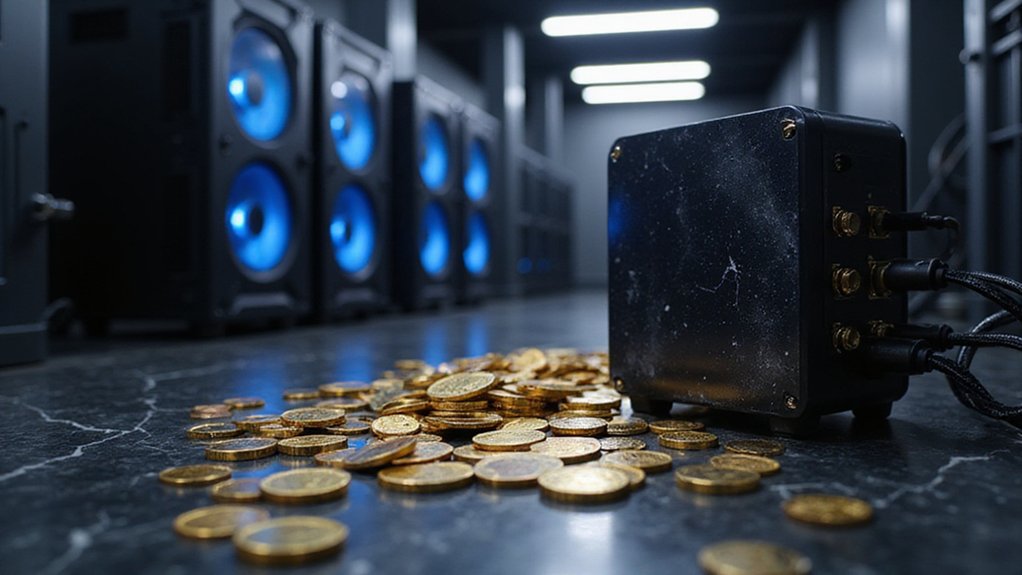While the cryptocurrency landscape continues its relentless march toward ever-more exotic technical configurations, BlockDAG has managed to orchestrate what might charitably be called a “surprising rise”—though perhaps less surprising to those who’ve witnessed the market’s curious appetite for hybrid blockchain architectures that promise to solve the eternal trilemma of speed, security, and decentralization.
The project’s fundraising trajectory reads like a masterclass in presale mechanics: $318.5 million raised against a $600 million hard cap, with over 22.3 billion tokens distributed to enthusiastic participants who watched their entry price balloon from $0.001 to approximately $0.0276. The mathematics here suggest a potential 2600% ROI from presale to listing—assuming, naturally, that market forces cooperate with such optimistic projections.
BlockDAG’s presale mathematics promise 2600% returns—assuming market forces align with such refreshingly optimistic investor calculations.
What distinguishes BlockDAG from the increasingly crowded Layer 1 space is its hybrid consensus mechanism, merging Bitcoin’s tried-and-tested Proof-of-Work security with Directed Acyclic Graph technology. This architectural decision has apparently resonated with over 2 million miners who’ve joined the network, creating what the project characterizes as “rapid network growth” ahead of its anticipated 2025 mainnet launch. The platform’s ambitious throughput capabilities promise to deliver between 2,000-15,000 TPS, positioning it competitively against established blockchain networks.
The technical specifications reveal EVM compatibility (because why reinvent the wheel when Ethereum’s developer ecosystem can be borrowed wholesale?), high transaction throughput capabilities, and what BlockDAG describes as environmentally sustainable mining through its cutting-edge PoW algorithm combined with DAG architecture. Whether this represents genuine innovation or sophisticated marketing remains to be determined by actual network performance.
Perhaps most intriguingly, BlockDAG has democratized its token acquisition process beyond the typical crypto-native audience, accepting payments via Google Pay, Apple Pay, and traditional credit cards alongside the standard Ethereum, Tether, and BNB options. This accessibility play, combined with a total supply of 150 billion BDAG tokens, positions the project for broader adoption once tokens become claimable post-presale. The platform’s architecture aligns with the broader decentralized finance movement, particularly in its emphasis on reducing counterparty risk through direct blockchain-based transactions.
The market has responded by positioning BlockDAG alongside established players like Filecoin, NEAR, and Algorand in various “top crypto coins to watch” compilations for 2025—recognition that, while not guaranteeing success, certainly doesn’t hurt when courting institutional attention in an increasingly sophisticated digital asset landscape.






